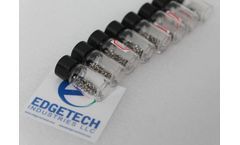Tumor Modeling Articles & Analysis
15 articles found
Through this project, the POAI active machine learning technology constructed a predictive model of tumor sample response to NPDC’s targeted drugs in a highly efficient manner, saving approximately 18 months of wet lab work in the process. Several NPDC compounds demonstrated efficacy across multiple tumor types and are now well positioned ...
One notable application of stable cell lines is in cancer research, where they are used to model tumor behavior and test potential treatments. These cell lines, often derived from human tumors, offer insights into the genetic and molecular underpinnings of cancer, helping researchers develop targeted therapies. ...
Among the most promising strategies in this endeavor are the use of tumor models for breast cancer and the development of customized antibody-drug conjugates (ADCs). ...
For anyone requiring precise results within challenging clinical settings where accuracy is paramount, nothing beats the integrity provided by platinum iridium marker bands. From their capacity to track tumors and generate 3D models of organs to helping surgeons plan critical operations – Platinum Iridium Marker Bands are essential for several applications ...
Moreover, to further explore the mechanism of PC occurrence, development, invasion, and metastasis, Alfa Cytology independently developed PC model construction services, dedicated to offering different preclinical cell models for PC research. ...
Alfa Cytology has announced tumor models customization service for pancreatic cancer research. Alfa Cytology, a biotech company specializing in cancer research, has recently unveiled the service on pancreatic cancer tumor model customization to dig into the generation and development of pancreatic cancer and correspondingly ...
Benefits and advantages of iPSC differentiation to neural stem cells (NSC), neurons and glial cells: Provides genetic and physiologically relevant in vitro models to study neural development and associated disorders: congenital disorders, neurodegenerative disorders and brain tumors. Generates a valuable model for identifying new targets for ...
Numerous studies employing syngeneic and spontaneous tumor models have demonstrated that genetic deletion or pharmacological inhibition of CD73 or A2AR significantly reduces tumor growth and metastasis. ...
Its high expression is associated with the occurrence of many tumors and poor prognosis. It is a very popular ADC research target, second only to HER2. ...
Chimeric antigen receptor T cells (CAR-T) and T cell antigen receptor chimeric T cells (TCR-T) are currently the "top stream" in adoptive T cell tumor immunotherapy. In particular, CAR-T therapy, which has been approved by the FDA, is rewriting the treatment paradigm of some hematological tumors. ...
Background Tumor immunotherapies compose immune checkpoint inhibitors, therapeutic antibodies, tumor vaccines, cellular therapies, and so on. ...
The main contributions of our method are: a robust cell detection algorithm to detect all tumor and non-tumor cells; a clustering model for computerized classification of tumor and non-tumor cells and subsequent proliferation rate scoring by quantifying Ki-67, based on classified cells which appear in breast ...
We've added over 125 new datasets to our Cancer Model Database. It provides access to a comprehensive collection of well-established tumor models for early-stage oncology research and increases their translational capabilities to the clinic. The update adds new patient-derived xenograft (PDX) models for several cancer types, ...
Nanoconjugates have matured from simple devices to multifunctional, biodegradable, non–toxic and non–immunogenic constructs, capable of delivering synergistically functioning drugs in vivo. The present study evaluates the efficacy of drug polymer self folding nano–conjugates of pectin–cisplatin to enhance blood circulating levels of cisplatin. Physical characterisation was done by DLS, zeta ...
This was done with the biologically motivated two step clonal expansion (TSCE) model of tumor induction. Experimentally derived osteosarcoma incidence in 1,194 mice following exposure to 224Ra with different total radiation doses and different fractionation patterns were analyzed together with incidence data from 1,710 unirradiated control animals. ...












